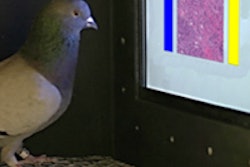
Much has been written about so-called "fake news" articles circulated via social media during the recent election campaign, and it's certainly a serious issue. These stories were, well, just stories -- created out of thin air by individuals with an agenda. But in this column, I want to address a different, more insidious news problem that preys on our laziness and short attention spans.
I am talking about misleading headlines that bend the truth of the story in an effort to be more interesting or sensational, to grab our eyes and make us read the article. I'm talking about click-bait.
But click-bait, as the name implies, aims to make us click on the article and read it. If we actually did read and understand the article, the misleading headline would be annoying but ultimately irrelevant.
The problem is that many of us never actually read the story. A recent study by computer scientists at Columbia University and the French National Institute showed that 59% of stories shared on social media had never been read by the sharer. Some have christened this new phenomenon "share-bait."
No matter what you call it, it's a problem when the headline is ambiguous or outright misleading. The headline can subsume the whole story and become the "truth." Popular Science ran a story several years ago calling out misleading medical headlines. The following are a few examples from that article:
- "Bras shown to cause cancer"
- "Bacon gives kids cancer"
- "Fountain of youth in a wine Rx?"
- "Sugar as addictive as cocaine, heroin"
Needless to say, those headlines don't tell the whole story (but just to be safe, maybe I will give my child some red wine to counteract the bacon).
Any news organization should strive to represent its content with an accurate title, but I would argue this is especially critical for health articles. People may change health and lifestyle habits based on the "gist" of one of these stories.
We often look to the headline for a take-home point, but sometimes it can be difficult to convey all the complexities of a health issue with a short, eye-catching phrase. Attempting to read the source material -- i.e., the actual scientific paper -- can be daunting and, frankly, quite boring for those without a science background. Gorgeous and entertaining prose is not explicitly discouraged in scientific publications, but these papers tend to stick to the facts, and they are usually written with a peer audience in mind rather than the general public.
Below I discuss two recent radiology-related news items that come to mind. They are presented initially with the misleading headlines, followed by the more subtle, detailed truth.
1. Ultrasound and autism
First, some selected headlines from a story (based on this article) that made the rounds in September. Here are a few examples of what popped up after a Google search of "ultrasound autism link":
- "Ultrasound in first trimester of pregnancy linked to autism"
- "Study links autism with first-trimester ultrasound"
- "Are ultrasounds causing autism in babies?"
Sounds frightening. Just reading the headlines alone, the only conclusion I would draw is that first-trimester ultrasound somehow increased the risk of autism. As you probably guessed, that conclusion is way off. What's the real story?
First, ultrasound does not cause autism. The study did not even try to determine if ultrasound causes autism, because that has been disproved in previous large studies. Rather, the researchers state right off the bat that their goal is to look for "a possible relationship between the severity of ASD (autism spectrum disorder) symptoms and ultrasound exposure during the first trimester of pregnancy in fetuses with a genetic predisposition to ASD" (emphasis mine).
In other words, they wanted to see if ultrasound exposure made children who already have autism worse. They were not even looking at all types of autism, just a specific subset with a genetic mutation called copy number variations (CNVs). According to the paper, first-trimester ultrasound may lower IQ and worsen certain behaviors, but only in autistic children with CNV mutations.
I'm not sure who, if anyone, is to blame for the disconnect between the above types of headlines and the actual substance of the research study. Is it possible that the authors of those headlines misunderstood the research? Or is it more likely they endeavored to create a sensational headline? I'll let you be the judge.
2. Pigeons reading mammograms
Maybe I have thin skin. Maybe I am prejudiced against pigeons. But the headlines about this study from 2015 really irked me:
- "The PIGEON will see you now: Birds can spot cancerous tissue in mammograms 'as well as humans radiologists' "
- "Pigeons diagnose breast cancer on x-rays as well as radiologists"
- "Researchers train pigeon pathologists to read mammograms"
Oh, I heard a lot about this story from family and friends. "Guess you'll be out of a job soon, ha ha ha!"
 The author, not amused.
The author, not amused.Ha, indeed. Would you like to know what they actually did in this study?
Two experiments were conducted to determine if pigeons could recognize cancer on mammograms. In one, they tested whether pigeons could recognize microcalcifications, a marker for cancer. In the other, they tested whether pigeons could tell the difference between a cancerous and noncancerous mass on mammograms. The pigeons were trained for weeks to learn each skill.
I don't mean to gloat, but in the second experiment, the pigeons failed. After training to learn imaging features that suggest a cancerous mass, they did no better than random chance in their attempts to identify these masses. So, no, pigeons did not diagnose breast cancer "as well as radiologists."
In the first experiment -- identifying microcalcifications -- the birdbrains fared better and were able to generalize their skills when tested with new images. Their performance was similar to that of the radiologists looking for microcalcifications. However, note this casual comment in the middle of the article: "In fairness, unlike the pigeons, the radiologists were not shown just small regions of interest, but whole images that had to be searched for abnormalities, a more challenging task."
In other words, the pigeons' images were magnified sections of the breast that contained the microcalcifications, while the radiologists had to search the breast for those same microcalcifications. It's as if they circled the abnormality for the pigeons. I know humans are smarter than pigeons, but you still want an apples-to-apples comparison when designing experiments. This wasn't that.
I don't want to diminish the visual and learning skills of the pigeons in this study; they were impressive. But let's not pretend our feathered friends were actually interpreting mammograms in the same way radiologists do.
Slow down before you share
I hope these examples illustrate the importance of understanding a story beyond the headline -- no easy task in the age of social media, with news stories constantly flooding our senses. It's fashionable to point to "the media" for society's woes, and I think they do shoulder some of the blame. But I don't think it's unreasonable to ask us -- the consumers of news -- to at least read a story before clicking that share or retweet button.



















